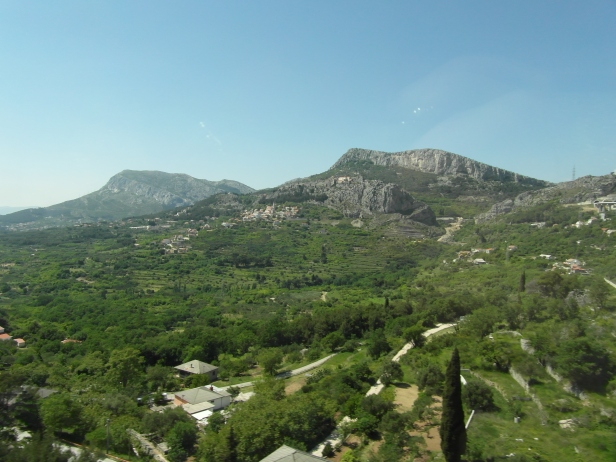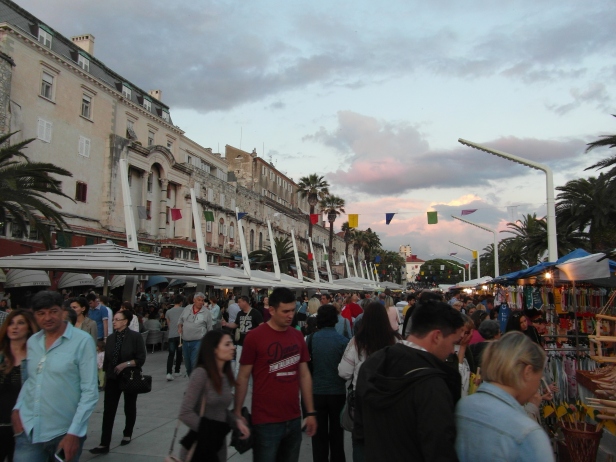Travelling from Zagreb to the coast is best done by bus. There are trains in Croatia, but the bus is a lot faster and much used. I reserved my ticket online at the Croatian website and picked it up the day before at the bus station. Even without speaking Croatian, this was all quite easy to do. The trip to Split took about 6-7 hours.
In the bus I sat next to a friendly man who did not speak much English, but still really wanted to have a conversation with me. He told me that he worked in Zagreb for half a year, and now he was on his way back to the island Vis, where he had his house and his family. The rest of the year he would stay on the island. He had a box of fresh strawberries, which he really wanted to share with me. My overall impression is that Croatian people can be a bit silent at first, but when they have a good feeling about you, they open up and are very friendly and hospitable.

The landscape changes drastically from inland to coast, completely switching climates. The inland is heavily forested, but a mountain range divides the interior from the Dalmatian coastline. The coast is very dry, almost desert like. A Croatian told me that the Venetians cut all the trees along the coast for their ships when this was part of the Venetian republic. The Dalmatian Coast has a Mediterranean climate, very sunny and full of ancient Venetian towns, islands and waterfalls. It’s one of the most beautiful regions of Europe.

Arriving in Split was arriving in chaos. It was Split Day! A festival celebrating the city’s patron saint, St Dominius, was happening and the city was stacked with people. I had to fight my way through a market place. There was a stage set up and I expected bands and music to arrive and for the city to go crazy. However, the stage was for a giant lottery in the evening, and when that was done, everybody just went home. The whole city emptied as people went back to the villages they came from. That was an unexpected ending to a festival.

I had a scare when I arrived at my hotel. The address left me in front of a random apartment building with no sign of any hotel. Having heard stories before of people getting scammed when booking hotels, I felt paranoid immediately. I called the hotel number and a guy answered, told me that someone would quickly come by with the keys. I waited on the sidewalk and after a while a girl arrived and brought me to the second floor. I was still suspicious and asked why there was no sign of the hotel anywhere. The girl got very upset that I didn’t trust what was going on here. She showed me the hotel sign, which was in some storage room because the high season had not really started yet and I was the only guest. She also showed me the room and it all looked like a normal hotel on the inside. I finally said it looked alright and she was visibly relieved. The rest of my stay at the hotel was uneventful. I felt slightly silly but tourists get scammed. It happens.

Split’s waterfront is a great place for strolling and eating fish fresh from the Adriatic Sea. But you might notice a smell of rotten eggs now and then. That’s because Split is built on top of a sulfur bath. The Roman Emperor Diocletian built his palace here to escape the politics of Rome and take relaxing sulfur baths here. Only later, when his palace was in ruins, did people start to build their houses inside those ruins, taking the stones right from the palace itself. The ancient walls of Diocletian’s palace are still there, and so is the sulfur.
